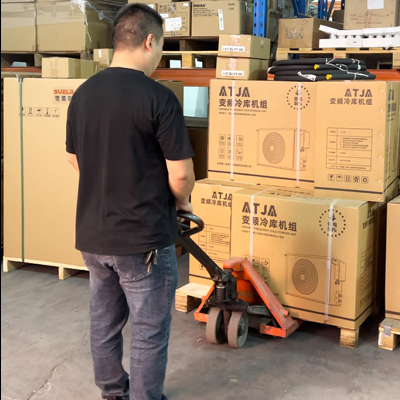The excessive fluctuation range of the temperature in the cold storage is essentially due to the disruption of the balance between the "stability of cold supply capacity" and the "change in heat load" of the cold storage. The core causes are the lagging response of cold capacity regulation, unstable external heat intrusion, and insufficient system coordination. The specific main reasons are as follows:
1. The response of the variable frequency regulation system lags behind
Variable frequency units rely on the dynamic matching of compressor speed to meet the cooling demand, but when the load changes suddenly, a "time difference" in regulation is prone to occur: For instance, when a large amount of normal-temperature goods are stored in the warehouse and the warehouse door is frequently opened and closed, causing a sudden increase in heat load, or when the heat load drops sharply after the goods inside the warehouse cool down to the target range, the adjustment speed of the variable frequency controller to the compressor speed cannot keep up with the change in cooling demand, resulting in the warehouse temperature first rising excessively and then dropping excessively, causing significant fluctuations. In addition, if the controller parameters are set conservatively (such as too slow a speed increase/decrease rate), it will also exacerbate the regulation lag.
2. Defects in the insulation and sealing performance of cold storage
Unstable external heat intrusion is an important cause of temperature fluctuations in the warehouse: Firstly, the door seal strips age, deform or the door hinges become loose, resulting in gaps after closing the door. The amount of external hot air seeping through the door gaps varies (especially when the external temperature and humidity change significantly). Second, there are joints, damages or moisture in the insulation layer of the storage body, resulting in uneven insulation effect. In some areas, the amount of cold air leakage or hot air intrusion fluctuates. Thirdly, the ventilation openings of the cold storage and the wall panels through which pipelines pass are not tightly sealed, resulting in non-uniform heat exchange channels.
Three, poor coordination and adaptation of system components
Asynchronous regulation among the core components of the refrigeration system can disrupt the stability of cooling capacity supply: on the one hand, the opening adjustment of the electronic expansion valve does not match the speed change of the variable frequency compressor. For instance, if the compressor speed has been increased but the opening of the expansion valve has not been promptly expanded, it will result in insufficient refrigerant supply and a sudden drop in cooling capacity. Or after the rotational speed is reduced, the expansion valve is not closed in time, resulting in excessive refrigerant and local undercooling. On the other hand, the defrosting function of the evaporator was improperly connected with the refrigeration operation. After defrosting, the refrigeration was resumed without waiting for the evaporator temperature to stabilize, resulting in a sudden drop in the warehouse temperature in a short period of time. Subsequently, it rose again as the cold supply returned to normal.
Iv. Abnormal temperature detection and signal transmission
The "signal distortion" of the temperature sensor can lead to misjudgment of the regulation instructions: If the sensor is improperly installed (such as close to the evaporator outlet, near the warehouse door or heat source equipment), the detected temperature is not the average temperature inside the warehouse. When local airflow changes (such as the start and stop of the evaporator fan or the opening and closing of the warehouse door), the temperature signal transmitted by the sensor fluctuates sharply, causing the controller to mistakenly issue "increase load" or "decrease load" instructions, which in turn leads to frequent adjustments in the compressor speed. The overall fluctuation of the warehouse temperature exceeded the standard. In addition, poor contact in sensor circuits and signal interference can also lead to unstable transmission of temperature data.


